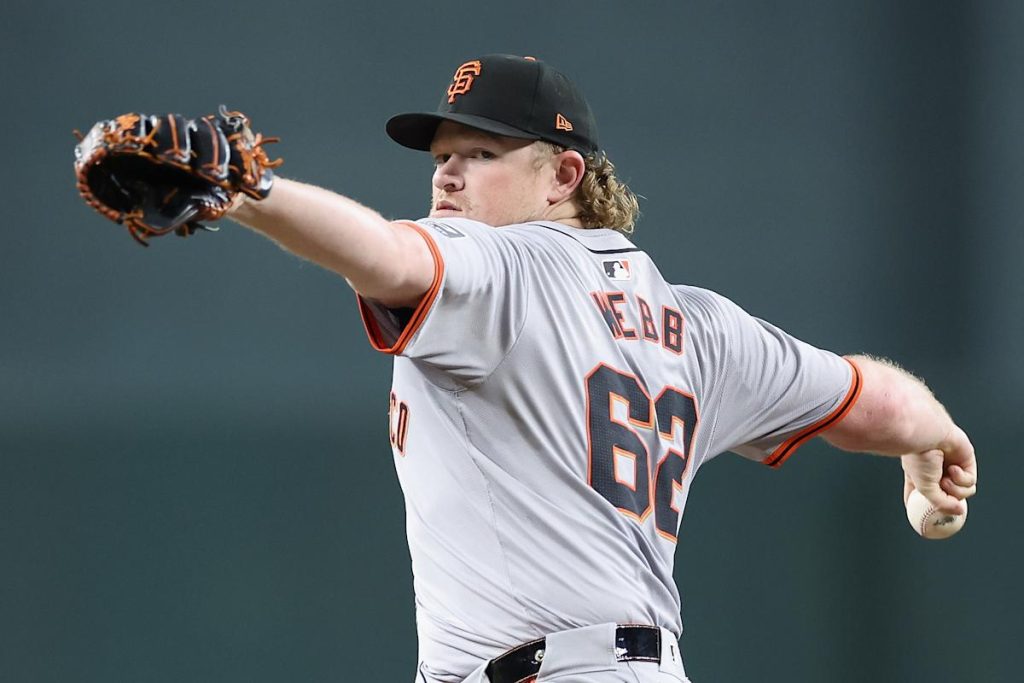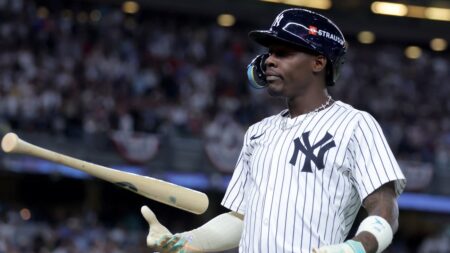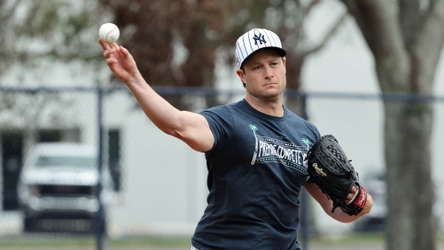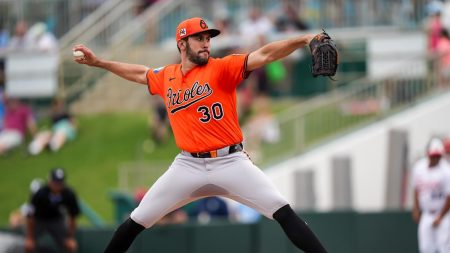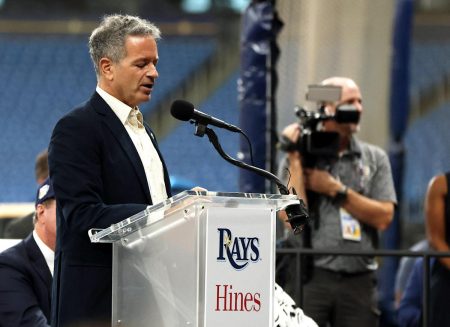Logan Webb: A Modern-Day Throwback
In the contemporary landscape of Major League Baseball (MLB), where pitch counts and bullpen usage often take precedence, San Francisco Giants right-hander Logan Webb stands out as a true throwback. Webb’s durability and consistency have not only made him a leader in the Giants’ rotation but have also drawn attention across the league. “I got through 204 innings last year, and if you go back 15 years, I’d probably finish 30th in the league in innings pitched. It’s crazy to look at,” Webb reflected with a smile to Yahoo Sports. His aim is to surpass 220 innings, a goal he’s set his sights on after reaching 216 innings two years ago. Webb’s dedication to increasing his innings totals is a testament to his unique approach in a game that has evolved towards shorter outings and more specialized roles. His manager, Bob Melvin, acknowledges this, noting, “With five-man rotations now, I mean, 200 innings is a lot [today]. I remember Jim Palmer telling me he threw eight consecutive years of 300 innings. Things are a little different now, but Webby is a little bit different than everybody else.”
A Product of Dedication and Quality
Logan Webb isn’t just padding his inning count; he’s doing so with exceptional productivity. Since joining the Giants in 2019, he has established himself as a reliable and effective pitcher, posting a 13-10 record with a 3.47 ERA last season while leading the National League in innings pitched for the second consecutive year. His peers recognize and admire his ability to consistently throw deep into games. “Logan Webb, he’s unbelievable. He throws 200 innings every year,” Athletics right-hander Luis Severino told Yahoo Sports. “Seeing someone like that who is so finesse, going out there trying to win games. I know wins don’t matter anymore, but I think for us pitchers, they do matter. And if he can go out there and throw nine innings, that is huge for the team, and also for the bullpen.” Webb’s leadership and performance have earned him the respect of fellow pitchers, many of whom see him as a role model for what it means to be a durable and efficient starter.
Learning from the Greats
Webb’s journey to becoming a workhorse pitcher was heavily influenced by the Giants’ organization, which has a rich history of producing starters who can log significant innings. During his early years in the system, he was mentored by veterans like Madison Bumgarner, Matt Cain, Jake Peavy, Tim Hudson, Jeff Samardzija, and Johnny Cueto. These players had all achieved the 200-inning mark multiple times and had tasted postseason success. “The one thing I learned from those guys — Johnny, Bum, and Shark — is that outs are outs,” Webb explained. “There used to be a big emphasis on it in the minor leagues. You would chart other guys’ starts in the minors, and one of the big stats was ‘three pitches or less in an at-bat.’ I took that to heart when I was in the minor leagues and tried to do that as much as I could. And I think that’s something that carried over to this day.”
The Art of Early-Count Contact
In an era dominated by high velocities and spin rates, Webb’s approach is refreshingly different. He prioritizes early-count contact and efficiency, which helps him stay in games longer. Over the past two seasons, he has consistently ranked in the top 10 in fewest pitches per at-bat. “It’s early-count contact. It’s lower pitch counts. It’s one of the reasons he can stay in the game,” Melvin elaborated. “He’s not chasing a strikeout all the time, which starters tend to do a little bit more so, and that’s one of the reasons they come out of the games early. They’re just throwing more pitches, and Webby is like, ‘here, hit the first pitch. Hit the second pitch, and that allows them to stay in the game.’” This strategy not only conserves his energy but also gives the Giants a significant advantage by allowing him to eat up more innings and reduce the workload on the bullpen.
Balancing Health and Workload
The challenge of balancing a pitcher’s health with the demand for more innings has puzzled MLB teams and the league for over two decades. Webb, who underwent Tommy John surgery in his second year of professional ball, believes his early injury played a crucial role in shaping his approach. “Getting hurt early was honestly a bit of a blessing in disguise,” he admitted. “It allowed me to realize real early that you can’t just show up and do a couple of arm swings to be ready. You have to get a stretch, whether it’s heat packs, some guys spend 45 minutes in the weight room getting ready just to play catch. There are things that you find that help a lot to just stay healthier and feel better.” His comprehensive preparation routine has been a key factor in his ability to pitch deep into games without succumbing to the injuries that have plagued many of his contemporaries.
A Blueprint for the Future
Webb’s success is a case study in the ongoing debate about pitcher workloads. His ability to consistently log over 200 innings while maintaining high performance levels is a rarity in today’s game. “It’s kind of the way the game’s gone a little bit. But I do think last year was like a step in the right direction. Just watching baseball, it seemed like there were more guys throwing more innings. I guess the key now is just kind of being able to do that every fifth day instead of, you know, once a month,” Webb observed. His approach combines elements of the past—focusing on outs over strikeouts—with a modern understanding of the importance of player health. As the game continues to evolve, Webb’s example may inspire a return to the era of durable, efficient starting pitchers who can anchor a rotation for the long haul.

